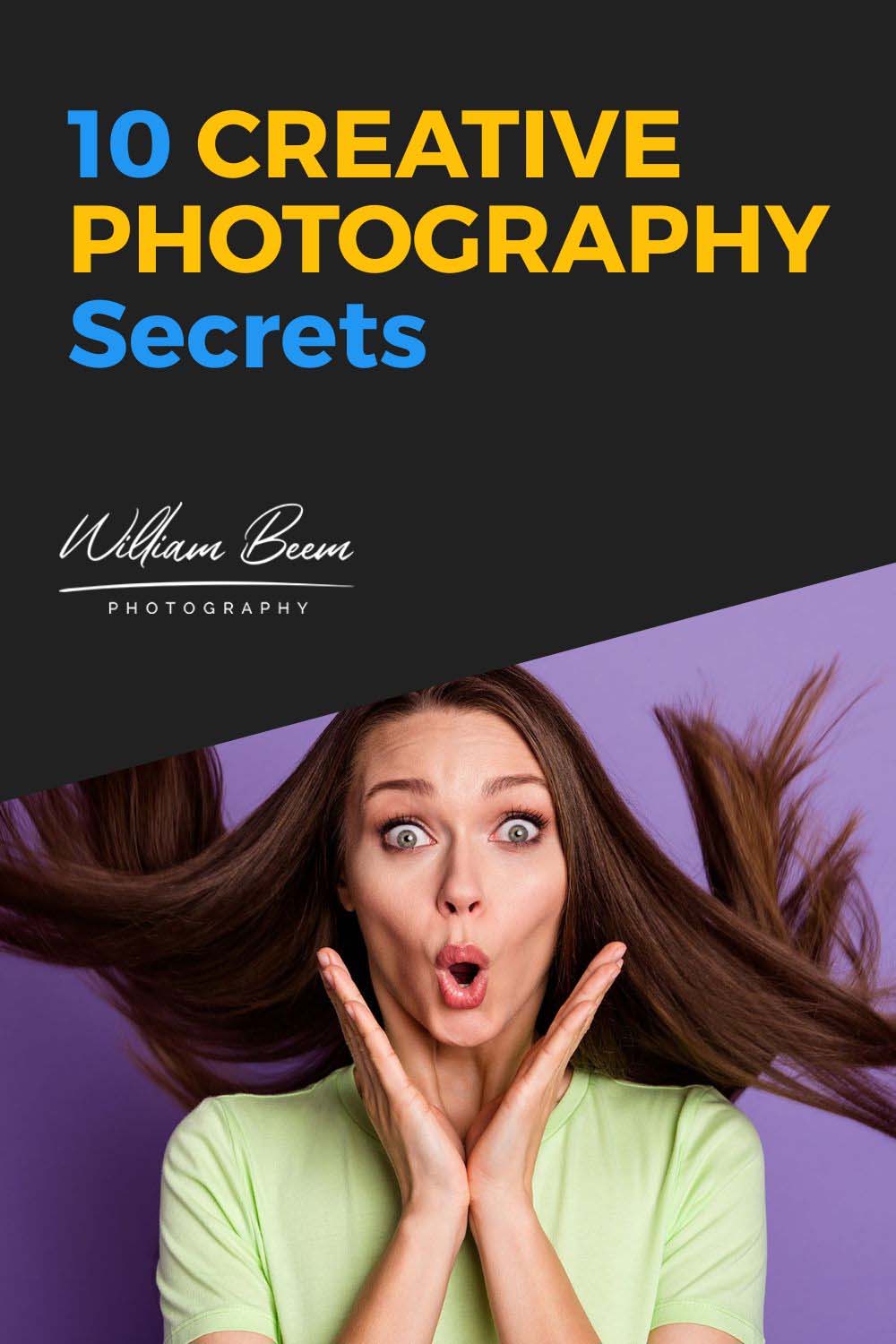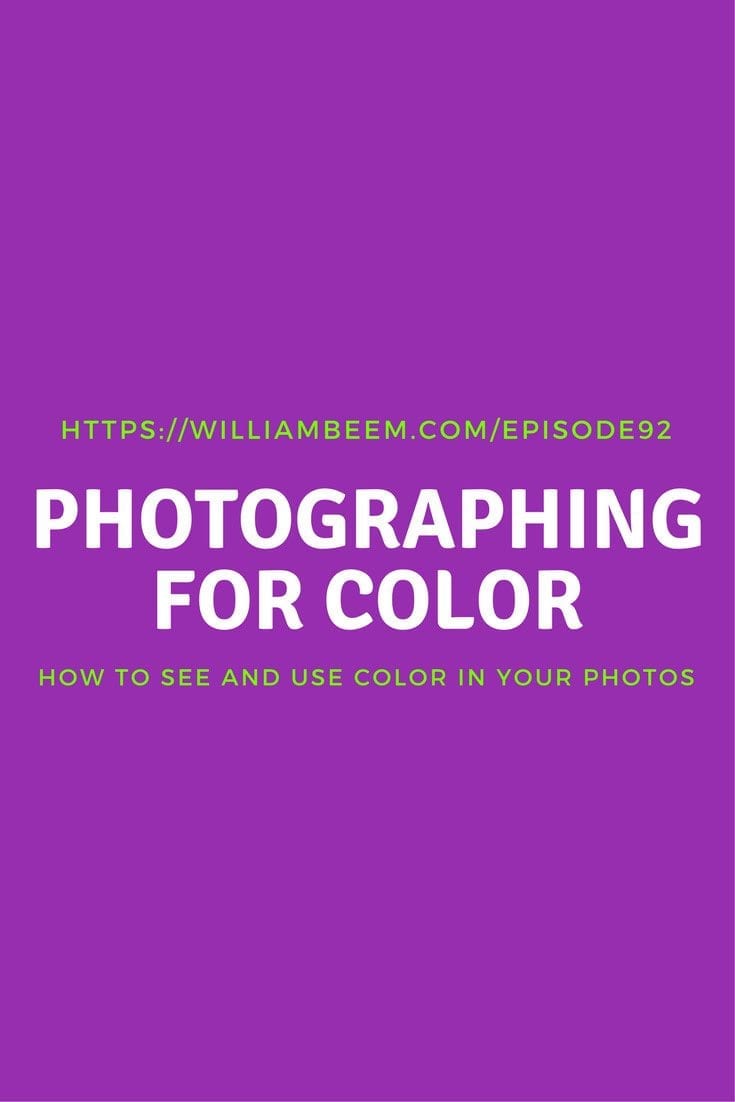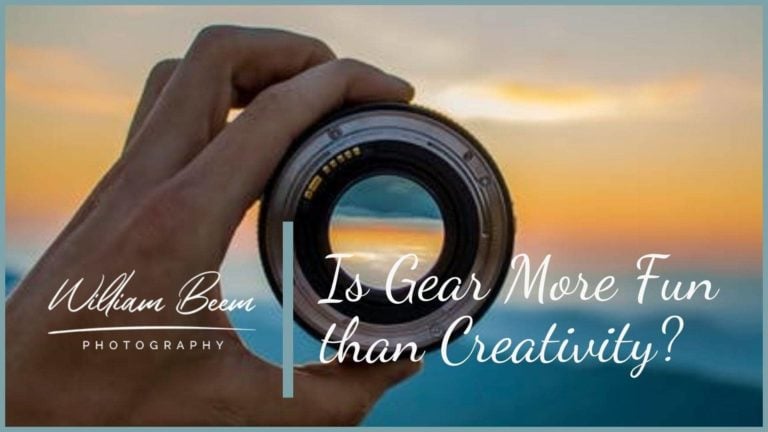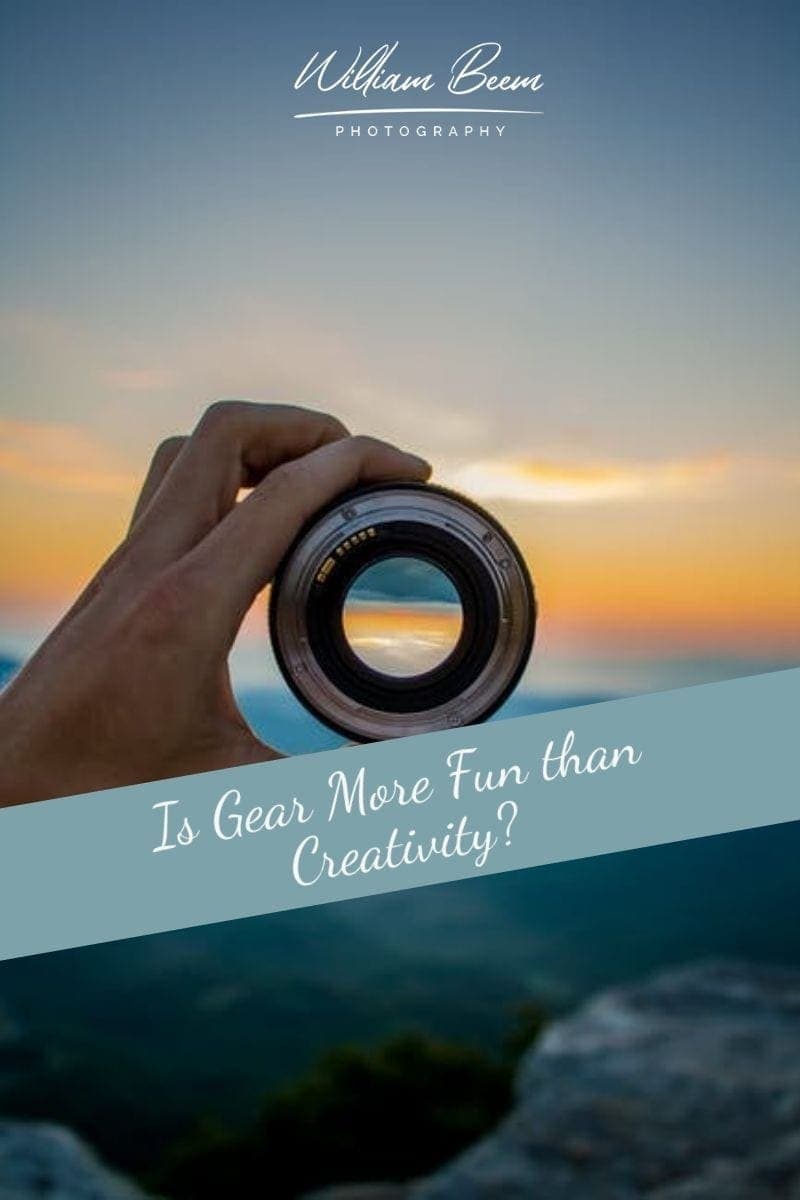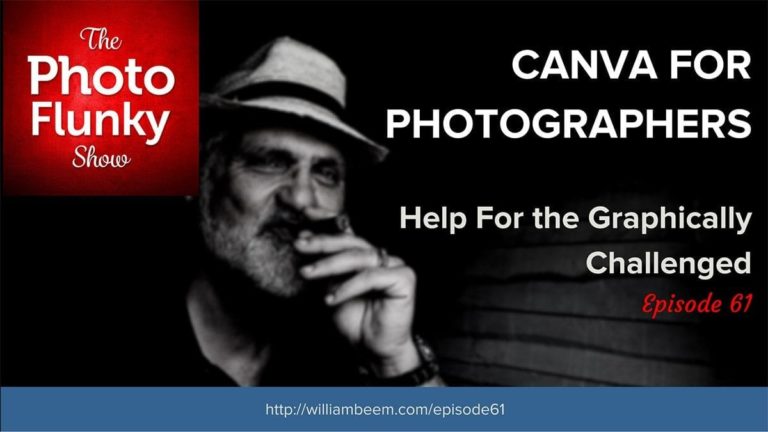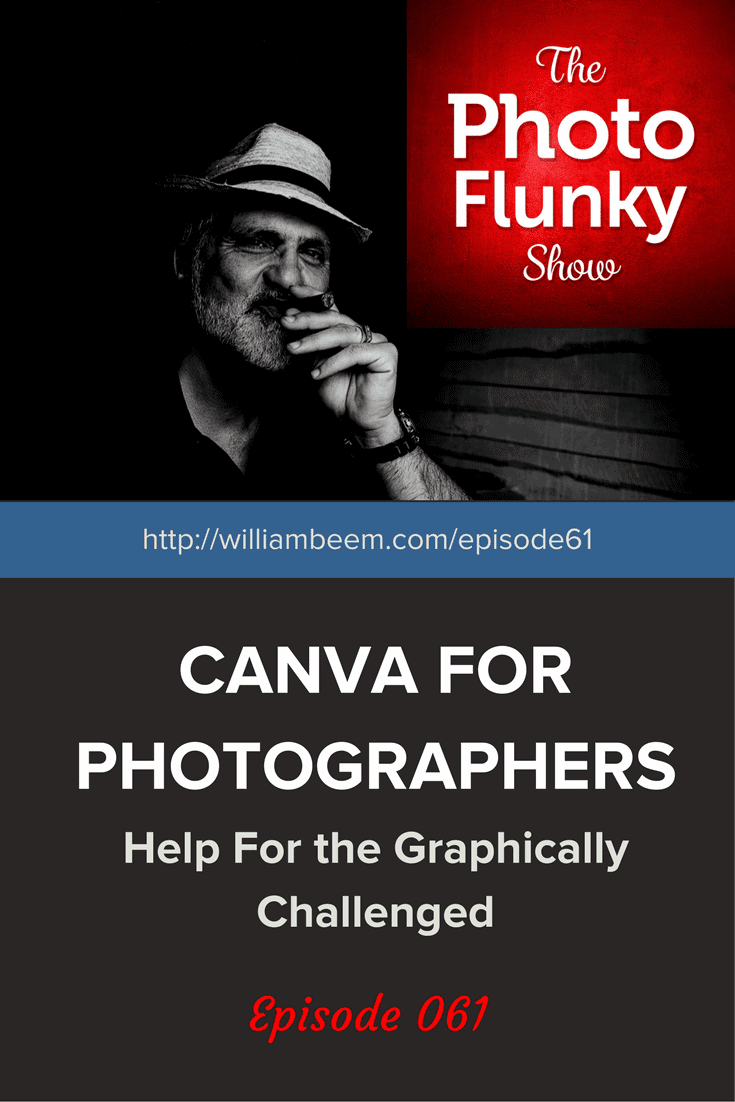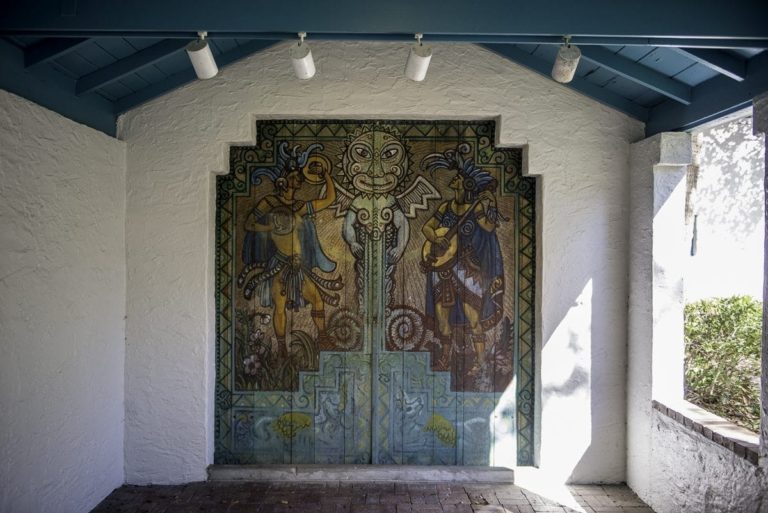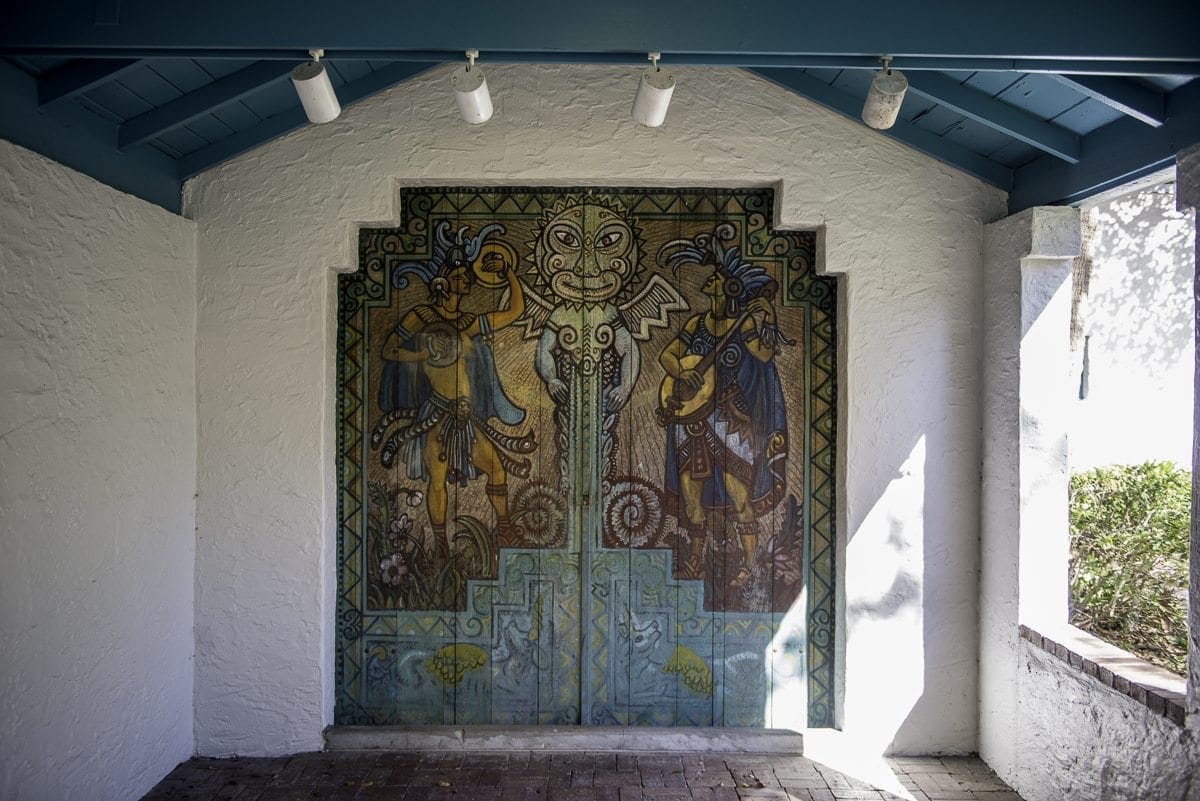Affiliate Disclosure: We earn a commission if you purchase through one of our links at no additional cost to you.
There aren’t really any creative photography secrets. There’s just information that you haven’t learned or experienced yet.
That’s why we wanted to share this episode, part of a larger post on 101 Photography Secrets, and dedicate this part to creative photography.
The Creative Photography Secrets That Matter
I think creative photography isn’t a matter of tricks or gimmicks. Rather, it’s a matter of awareness of some issues and solving problems to develop your creativity.
Creative photography is about creating a photo that your audience loves and evokes emotion from them. You want to create the images that you like, develop an audience who likes what you do, and give them something to feel.
Many people get into photography and concentrate on the technical aspects of exposure. That’s important, but the technical aspects are there to serve the creative artist inside you. I can take a technically correct photo of my car tire, but it won’t make anyone feel something emotionally unless they’re shopping for tires.
Create photos that spark emotion. That’s the start of understanding the creative photography secrets below.
1: The Mind Goes To The Brightest Spot In An Image
Tell me if you’ve heard this one before, because it sounds like a technical issue. It’s not. It’s about how the mind processes what it sees.
We’re like moths drawn to a flame. We see something bright and we go to it. When we see something in shadow, we shy away from it. Could be something in those shadows that wants to eat us, so we go for the brighter things.
It’s an elementary component of human existence and you can use this to your advantage.
The bright spot doesn’t have to burn like a flame. It just has to be a bit brighter than anything else in the photo to attract the eye. If your subject isn’t the brightest spot, then the brighter thing is a distraction.
2: After Brightness, The Mind Goes To The Sharpest Spot In An Image
Brightness is all well and good, but we also want to understand what we’re looking at in a photo. Sharpness is the secondary draw to our eye.
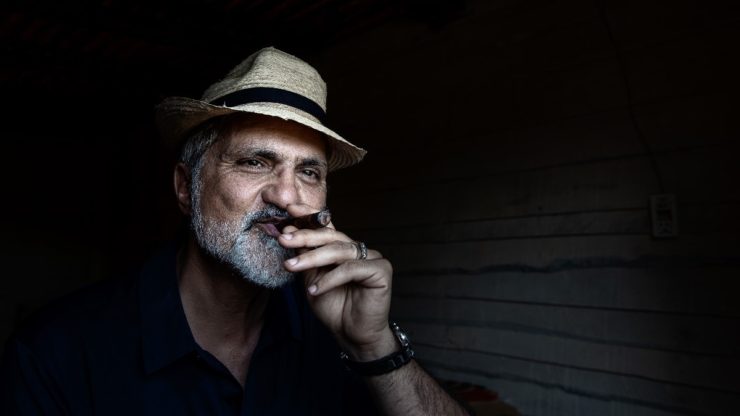
The portrait above has a pretty dark background, but light draws our attention. Now imagine if we couldn’t clearly see the man’s face and features. If he was out of focus or blurry, does it matter if he’s brighter than the background?
We need sharpness to define our subject. You don’t have to rely upon shadow. A shallow depth of field also provides more sharpness to our subject than the surroundings.
Don’t make everything sharp, unless you want your viewer to look everywhere with equal importance.
3: Opposites Attract. Use Contrast.
There are many types of contrast:
Embrace the differences to draw the viewer’s eye to your subject. You see color contrast all the time in movie posters, often using the Orange & Teal colors to accentuate the contrast between subject and background. Check out these posters for Star Wars movies to see an example.
You can also use a situation to highlight the difference between your subject and environment, sort of like a fish out of water.
Use your imagination and think of ways to create contrast in your photos.
4: Trying and Failing is Better Than Never Trying at All
Many times, I’ve heard from photographers who didn’t have the confidence in their own skills to try something that interested them.
Every expert was once a beginner.
We aren’t born with a camera in our hands. It takes time, practice and experience to become an expert. The longer you delay getting started, the harder it is to master something you desire.
What is the consequence of taking a bad photo? Absolutely nothing!
The government won’t raise your taxes because you screwed the pooch on a photograph. Your friends won’t leave you because you screwed up, either. If you don’t like the result, don’t show it to anyone.
Keep trying until you have something worth showing.
5: Develop Your Sense of Timing
If you’re taking photos of something moving, there’s generally a key moment – a peak of action. That’s when you want to snap the shutter, and it takes practice to develop this sense of timing.
If you’re photographing a whale breaching the water or a basketball player about to dunk the ball in the basket, there’s a moment where you see a bit of hang time. That’s when the upward or forward motion ends and just before the decline begins.
You can practice taking photos of people walking. If you don’t hit the right moment, photos of people’s legs in motion look really awful. We want to see that stride fully extended before the legs and feet change position.
If you want to photograph something that moves, look for the peak moment. It not only looks better, but it sparks the imagination of what happens next.
6: Kill Your Darlings
When you think you’ve mastered your version of photography, kill it and move on to something else. We grow by embracing challenges, not by resting on our laurels.
The Beatles reinvented their music on almost every album. They always stretched to see what they could do next, not just repeat what worked the last time around.
This is true of any artistic endeavor. Fashion designers change styles year after year. It’s not like you find many bustles in women’s fashion these days.
One of the greatest creative photography secrets is to keep moving. Kill your darlings and create something new and daring.
Sometimes, people will think you flopped. What do they know? Declare success and move on to something new.
7: You’re Not Stealing Ideas. They are influencing you.
Don’t pretend that you don’t like what you see in other photographs, and don’t be afraid to take what you like and use it in your own creative photography.
How do you know that isn’t what they did to create the photo that you liked?
The execution is more important than the idea.
Let me give you another example using The Beatles. I like the song “With a Little Help from My Friends“. Truth be told, I like the Joe Cocker version much better.
He didn’t write the song but made it his own with a different arrangement. Tina Turner did the same thing with “Proud Mary.“
Those were some of their biggest hits, influenced by someone else.
8: To Get Better, Hang Out With People Who Are Better Than You
There’s an old saying, and I don’t know who originated it.
If you’re the smartest person in the room, you’re in the wrong room.
Unknown
You can help others if you’re the smartest person in the room, and that’s fine. One of the best creative photography secrets is to hang out with people who demonstrate more creativity than you do.
Observe them. Learn from them. Let them influence you to create something of your own.
I’m increasingly impressed by the work of Lindsay Adler. She keeps creating new images dripping with creativity. She’s a master of light, color, fashion, and design.
Yet, she retains a humble attitude and does what she does. We sat next to each other at a session during WPPI a couple of years ago and had a nice exchange. Apparently, her father looks something like Borat and she said she was going to use his photo as an avatar one day because, as she said, “He’s cute!”
I’m still waiting for that avatar, Lindsay!
9: Move Your Ass
This time, I know who said this quote:
Move your ass!
Jay Maisel
Jay’s admonition to “move your ass” means that you don’t get great photos just from standing in one spot. Move around and see your subject from different perspectives.
Maybe there’s a better angle, a better background, or just a better composition to be found if you only move your ass.
If you really want to put this into practice, put down your zoom lens and use a prime lens. That’ll get you to move and see what you can create.
10: You Can Reinvent Yourself At Any Time
One of the biggest creative photography secrets is that you don’t have to be who you’ve been. This is related to the tip to kill your darlings, but it’s a bit more extreme.
Instead of taking a look at changing how you approach a genre of photography, change your genre if it suits you.
That doesn’t mean you have to abandon your past, but branch out and create something new. That’s why I’ve changed my photography website a few times, also.
I think Moose Peterson is an outstanding example. He’s well-known as a wildlife and landscape photographer. A few years ago, he decided to try something new and started aviation photography – mostly with old warbirds.
Now he has an amazing collection of aviation art, and he also learned something else.
Pilots will pay a lot more for their photos than bears will.
Creative Photography Secrets are Just Problems to Solve
As I said, there are no creative photography secrets. There are bits of information you have to learn, which are mostly about problems to solve so you can take photos that evoke emotion within your audience.
I feel something when I see Lindsay Adler’s stunning portraits. Then I feel something else when I see Moose Peterson’s amazing aviation photos.
What do they have that you don’t?
They took the time to master their craft and push beyond the mundane that most photographers accept. So the key to overcoming creative photography secrets is to break through when most people quit.
This may come as a surprise to you, but photography is considered an art form. And the thing about art is that you need to be creative. There are an awful lot of photographers who are very technically minded and they kind of struggle with the idea of being creative. So if you're one of those folks, please listen, we'll share with you what we can,
especially Lee, because Lee is definitely coming from the creative side rather than the technical side. And if you are already creative, listen anyways, you might be amused with what we have to say. I'm William Beem. Welcome to I Like Your Picture, the show that helps you improve your photography with visual storytelling. What is visual storytelling? It's a method of approaching your photography with a knowledge of who you're trying to serve with your photos and what emotion you want to make them feel.
We encourage you to concentrate on your subject, light and background to create a photo your audience loves. I'm glad you found us. Hi, my name is William Beem, and today we're going to be talking about creativity. What we want you to remember, of course, is that photography is an art. It's okay to be an artist. And remember,
whenever you hear all these photography rules, they're more like guidelines. So think about Pirates of the Caribbean. And the final takeaway is you can't please everyone. Don't worry if somebody doesn't like your art, they're just not part of your audience. Actually. I think if you seem to be pleasing everyone, you got a problem. Yeah. I mean,
if you look at art, there are people who are really big fans of some styles, and it doesn't matter if it's music or painting or sculpture or whatever form of art it is. Some people are going to like it. And some people don't look at it and say, I don't like that. Yeah. And that's okay, because you cannot please everyone all the time and it's,
you don't want to have to like every single thing either. I don't. I thought you'd like that. I mean, particularly when you come to music, there's some stuff that I hear on the radio or being played. and I thought that I just don't like that. And that's okay. I'm not the audience for that. Matter of fact, we're recording this on the day after the Electric Daisy Carnival played in Orlando.
I can tell you for sure, without even having attended, I wouldn't have liked the music. And we know that because when we had our honeymoon in Las Vegas, apparently that was one of the Electric Daisy Carnival was going on there. And we could see the people who were creatively dressed. Yes. We'll leave it at that. It was entertaining though.
I hope. Yeah. I hope the folks who attended had a really wonderful time, but it wouldn't have been something that was good for either of us to go to. And so that's what I mean, like you can't please, everyone, don't worry about it. You know, concentrate on the people that you do please. Even if you're just doing this for your own entertainment value.
So photography is, is something that you're not going to please everybody, but that's okay. All right. Let's get onto our main points. And some of these first ones are pretty simple, I think, but there's something that you need to keep in mind as you're coming up with creative composition. So the first thing I want to let you know is the mind or the eye goes to the brightest spot in an image that is very true.
And that's why a lot of photographers work with flash or they position things in the light to make sure that they're getting some things that are brighter and some things that are falling off in the shadow. Lee, you do this by literally, you've got our dining room table and there's a big window there. And if the light isn't falling the right way, you either cover something up or you move the set around.
So the light goes into it. Yeah, I'm the, I can do that because my things are kind of portable. I can swing things around with a little bit of fiddling, Either food or still life or something like that. I am. And I also kind of do things a little bit backwards because what I do is I start off and look at everything,
you know, with the light, as it is falling on it. And then I block off almost any everything. And then I start letting in light where I want had and play around for me. I just, I guess it's a habit. You just find your system. But I realized when I was explaining, it's probably a year ago that I was doing it backwards from
what I usually do. But the point we want to make with this is you don't just have to accept light as it is. Even if it's coming from sunlight through a window, you can control it. You can do things to block it off where you don't want it to be. And you can go out on a nice, bright, sunny days,
tell someone stand there. I'm going to take your photo. And you do. And if you don't like the results, well, either you can walk around them or you can have them turn away from the light or the side of the light, whatever you want to do. There's different ways that you can control it, but use the light to have the brightest spot.
And it, and I'm not talking about something that's blindingly bright, just something that's a little brighter than everything else. And let that emerge from the light. And you'll get a more interesting thing and people are going to be naturally attracted to what that, whatever that is. I don't care if you're taking a picture of a building and you've got to wait for the light to be in the right place,
or if you're taking a portrait. Well, there's a reason why highlights is used as a term to describe the, like the pieces or parts of anything that stands out the most, not just visual things. You know, you see these are the highlights. They could be good or bad . Somewhere where it came from originally because It was the highlight of your trip.
Exactly. And that's the thing that stands out. And the thing in a photograph or a picture that's going to stand out the most is whatever is brightest. Number two, after brightness, the mind goes to the sharpest thing in an image. And you've probably seen this if you've ever seen something, particularly a portrait, but again, it could be any kind of photograph where the subject is sharp and in focus,
and they're using a shallow depth of field to create bokeh behind them. And that kind of isolates the subject. You don't always have to go to extremes with that, but if something fades off into blurriness or, you know, using that shallow depth of field, that's going to attract your eye because you can make out what it is you don't. If you're sitting there looking and everything's blurry,
you're just like, well, that's not art. Although there are people who do that. We talked about that on a previous episode about light, where people just blur out everything and have the little highlight balls showing up. I wonder if that highlight balls as a phrase? Maybe they're making backgrounds, But the idea is that you can use blur and depth of field to,
for lack of a better word, to highlight what you want to promote inside of your image. Number three, opposites attract. So use contrast. That is very true, isn't it? And there are different types of contrast, but contrast is essentially looking to opposite ends. So you can have color contrast. You can have tonal contrast. You can have contrast with your subject.
So if you put somebody in a, like a fish out of water where they, you know, some place where they don't belong, that is a form of contrast as well, too. And texture as well Works well for texture versus, you know, something rough versus something smooth. But those things of using contrast are part of your visual storytelling. And that helps you again,
show your subject perhaps in contrast to something that's it just makes them stand out. Number four, trying and failing is better than never trying at all. Absolutely. I wanted to make sure I put this in there because I've run across photographers who just simply thought I can't do that. So I'm never going to try. Trying is what makes you get better and you'll only try for as long as you don't get it,
right. Because once you get it right, you're not trying anymore. So I think that is really where your biggest learning curve is. A lot of people are afraid of failure. And think about this. I mean, I want you to think about this carefully. What is the consequence of taking a bad photograph? None. You don't show it to anybody.
And if you want to get better at something you have to practice, so you don't have to do something publicly, you know, to where everybody sees that you failed. Matter of fact, people might try to help you. If they see that you're having a problem. They may say, try this or try that. They may give you advice or tips.
But if you're concerned about publicly failing, try something in private, and you're not going to get better without practice and without effort. And without trying. Get yourself a memory card and write on it, screw up cards. So you can get to go and have fun with it. I used to be very, very afraid of taking portraits because I wasn't good at it.
Well, I wasn't good at it because I'd never done it before. And I didn't understand lighting. I didn't understand the first two points that we mentioned as far as the brightest spot and the sharpest spot. And as I started to learn how to control those things, I got better at taking portraits. As I started thinking about putting people in different circumstances,
you know, maybe where they don't belong. And I had a different type of contrast, that kind of trial and error really helped me focus in on what I liked, what worked and what didn't. I've made tons of mistakes. I have tens of thousands of mistakes on my hard drive. But you also learn to troubleshoot situations which may arise, not out of a mistake of your own,
but a situation where you don't have absolute control. And if you've been through the process with a self-imposed mistake for the want of a better phrase and learned how to work through it, that kind of sets you up better for dealing with issues that come up when you're not expecting them. Yep. All right. Number five, develop your sense of timing. You know,
what we found was actually a great way to develop your sense of timing was taking photos of fireworks. Yes. Get your camera on a tripod, get a cable or shutter release of some kind. And then instead of looking through the viewfinder, just watch what's going on, whatever your subject is. And then you start clicking the shutter at optimum moments. And I know portrait photographers who work this way.
They're not looking at somebody through the viewfinder. They're looking at the person and they've already set up their camera and lighting. And everything's all set. What they want to concentrate on is their subject. And people's emotions change. Their facial expressions change. And there's a certain sense of timing. You learn how long it takes for you to see what you want to see,
press the shutter button and get the shot. I also due, has something to do with your camera. I mean, when you're using your own equipment, you get used to that specific timing. And once you get to know it, I think you've really mastered it. If you're into wildlife photography or sports photography, there are going to be peak moments of action.
And not that I have a lot of whales where I live. I mean, Sea World is not too far, but when a whale breaches, there is a peak moment where there's just a little bit of hang time and that's probably the best time to get that shot. Now you could try and just, you know, go on full blast mode and take pictures all the way up.
I don't think that's going to get you your best result though. You want to watch your subject to see when they get to that peak and then take the photograph. Same thing with sport. If somebody is leaping into the air, you want to get them where they don't look so awkward, because I don't know if you've ever done this or not, but when you take a picture of somebody walking,
there are a lot of parts of simply taking a step that when you freeze them look incredibly awkward and their legs just aren't right. And you want to make sure that you understand when someone's legs look normal for walking in photographs. So it's like, otherwise they look like they're almost, you know, clumsily walking along. So just something as simple as taking photos of people who are walking to get the peak moment requires a sense of timing on your part.
And you have to anticipate when that action is going to happen and you need to click your shutter just a moment before. That comes through observing. Yeah. So that's part of what developing your sense of timing is, is observing what your subject is. And I don't care if it's fireworks or whales or people walking or, or leaping or bounding around, or even if it's a motorcycle coming around a curve,
you just need to observe your subject. See how it behaves naturally, and then be prepared to click the shutter. Number six, kill your darlings. All right. I've been talking too much, Lee, so why don't you go ahead and take that one. All right. When I say kill your darlings, you're going to go through photography and you're going to find something that you've really liked you think is really good.
And you think you're at your peak. You're not every time you think you're at your peak. You have more room to grow. You need to take the work that you've done and just kill it. Just say, I've gone as far as I'm going to go with this, I'm going to start something new. And there's something about that act of starting something fresh.
You see things differently because you're not looking at something that's so familiar that you're so perfect and expertise at you kill your darlings and move in a different way. And there are plenty of examples of this in art. There are artists who've gone along and everybody loves what they did. Then suddenly they came out and said, look at my new work of art.
Everybody's all excited. Then they look at what in the world have you done? If you look at musicians, they will change their style sometimes from one album to the next. So the idea is to keep growing. And in order to do that, sometimes you have to let go of the things that you've done before. That's very true. I mean,
I used to, I've always enjoyed playing around with still life's and some food photography, but it wasn't the one thing that I invested all my time in before. And I had photos that I was really pleased with. And I was looking through an old memory card the other day. It wasn't a memory card. It was probably a backup drive or something. I thought,
oh, these are terrible. And I just cleaned up some of this stuff because I realized that, yeah, that was nowhere near my peak. They were just horrible. But then I'll look at all the times that I used to go, you know, all the time I spent at Disney World taking photos, I kind of got to know so much about my environment,
where I was taking photos, got to know my camera in it, you know, and all the other aspects that really helped to consider. And when I look back at my, I'd say the last two years of Disney photos that I took, because we don't go anymore. I'm actually pleased with how they are. So I've, I've kept the most recent years aside from the memory,
you know, the family things, obviously I'm going to keep, but you know, photos that I took for the love of photography, there's a lot of that stuff that I was just like, ew. And that happens. And when you step away and outside of your comfort zone and start something new, you realize that you have potential to do something different and potentially better.
And that's how you grow as an artist. Number seven, you're not stealing ideas. You're being influenced by them. Not inspired, Influenced. And yeah, I hate the word inspiration. I know a lot of photographers that talk about inspiration. They say they're going to inspire you. No, they're not. Inspiration comes from within. Influence. However, is something that you observe and see around you.
And again, I'm not trying to influence you directly, but you will understand what is an influence for you, whether it is, you know, something that you see, something that you experience, there are a number of things that can influence you and you can see other people's photographs. And you're not trying to copy exactly what they've done, but you're looking at the theme.
You're looking at the idea. Is this a portrait? Is this a still life? Is this, you know, a picture of a bear that's sleeping with his big giant claws out? You might look at those and say, I'd like to try something like that. Yeah. You're not going to get the same bear. You're not going to get the same portrait.
You're not going to get the same exact thing. And that's not stealing ideas. Cause I guarantee you, the people who took those photographs probably saw other photographs that gave them the idea for what they were doing. So that's what I mean by you're not stealing, you're being influenced. That's also good to be influenced by, you know, several photographers or artists or whatever.
You're trying to learn. It. It gives you the variety. And I think when you're drawing from different sources, that is a much better way. It gives you a more balanced way to find your own way to do things. And then you'll have your style and you'll probably influence somebody else. And that is creativity. That is where you say, I like the color from this person.
I liked the lighting from this person. I liked the design of maybe the, if someone's wearing a dress from this person, but it's you who combines those different elements together. That's influence. So you don't have to copy anyone directly. And you know what, even if you're copying someone directly, you can use that as a learning experience to say, okay,
how do I do this? I mean, I just showed Lee something yesterday. I was actually trying to come up with a style for actually it was a web design thing and I was flipping back and forth showing her mine and the original. And she was saying, well, what's the difference? Yeah. I thought it was the same page. I hadn't actually realized he was toggling.
And the only reason I was copying that page was to understand how they built it. So then I could go off and do what I wanted to do with my stuff. So it's okay for your own education. Copy somebody else's photograph and then use that as influence to make your own photograph. All right. Number eight, to get better, hang out with people who are better than you.
It's just good advice for everything. Isn't it? It really is. I don't care what you're doing. If you're the smartest person in the room, then you're in the wrong room. That's an old saying, I don't know who originally said it, but it's true. If you want to improve, if you want to get better, hang around with people who do things better than you and you will observe what they do.
They may give you advice and they'll help you out and say, alright here's how I do this. If you're hanging out with people that you think are better than you and the very secretive about what they do. I think those are probably the wrong people. Yeah. I, I hang out with people that are better than me and those are people who like to share.
And I like to share with someone who wants to know something from me. There are no secrets. I mean, I know I'm titling this whole thing about, you know, 10 secrets of, you know, whatever topic we're talking about. There are no secrets. There are just things you haven't learned yet. And the best way to learn is to hang out with people who are better than you.
Well, because they've already traveled that part of the road made the mistakes you're making right now. Yeah. So don't worry about secrets. Don't worry about anybody who won't share with you. If somebody will not share with you, then you're not going to get anything out of many ways, leave them around, leave them alone and then just move on to somebody who's a bit more friendly.
Yes. Go for the friendliness. Number nine. This quote I do know it came from Jay Maisel, move your ass. Yup. I like that as well. Look, you can take all the photos you want with your feet firmly planted in the ground, but you'll never know what possibilities were there. Unless you get up and move around your subject,
move to different places, move at different times of day or night. Photography is not a static profession where you just plant your tripod. You stay there and never look at anything else. If you do, your results will never change. And then when it's time to kill your darlings, well, one of the easiest ways to do that is to move your ass.
You also do. Yeah. Cause you don't get different angles. You know, if you just always sitting in the same place, like she was watching my mother who's elderly, taking pictures of it's a Thanksgiving setup. We have around the fireplace and she had her phone out. She was trying to take the pictures and I noticed that she was standing there and she was zooming and zooming.
And it just sounds so silly. But I said, mom, why don't you just step closer? And I think in her mind, she thought that it wasn't all going to fit in, but the dimensions are pretty much the same. And as she stepped forward was like, okay. Yeah, that's much better. So there's a lot that you can discover just by moving around.
So mobility is one of your biggest assets as a photographer. I love tripods when they're appropriate, I'll use them. But most of the time I'm holding it in my hand, I'm walking around trying to look for the right composition, the right angle of light, the right color, the right background. Sometimes, you know, if you don't move and you say,
man, that background sucks. Well walk away from it. And also sometimes by walking around to try and solve one problem, you see a totally different shot, maybe an as well as not an instead of. You miss things when you don't explore the different perspectives. Yeah. All right. Our last one, number 10, you can reinvent yourself at any time.
Sounds fantastic. And this is just one of the joys of creativity. You don't have to do the same thing over and over again. You can decide, you know what? I'm not a portrait photographer anymore. I'm not a wildlife photographer anymore. And maybe you want to be a travel photographer. Maybe you want to be a food. Maybe you want to do aircraft photography.
I think of Moose Peterson, who I met as a brilliant wildlife and landscape photographer. Then one day he got the idea like, you know what? I want to shoot Warbirds and he does. And he's got beautiful photos of all, lot of these military Warbirds in flight. And that doesn't mean that he doesn't do wildlife photography anymore. I believe that he still does. Doesn't mean that he'll never do landscape photography,
but he found something new that he likes. And he also found that pilots will pay a lot more than bears will for their photos. Maybe that's one of the reasons you reinvent yourself as like you're following the market. You're not stuck doing what you're doing. If you're not happy with what you're doing, leave it. You don't have to be stuck there.
You can go ahead and do something else. You don't need anyone's permission. You can reinvent yourself at any time. Those are our 10 secrets about creative photography. I really needed to get better names for these things, but I hope you enjoy this. This is part of a list of a hundred and one secrets or tips for emerging photographers that I came to.
I will have links in the show notes for this. And if you have any comments or questions about what these things are or any ideas of your own for how to make your photography more creative, please let us know in the comments. And where do you find those comments, you may ask? Show notes are going to be available at williambeem.com/episode274. So if you have any comments,
please go there, visit us, let us know. Did you like the episode? Did you have any ideas that maybe you didn't know about before? Or do you have any ideas that we didn't talk about? Let us know there and that'll help everybody else that when they go visit, thank you so much. I hope you're having a wonderful day and we will see you again on the next episode.


